There were many great European cars that came out during the 90s. While American cars focused on muscle and forward speed, European cars focused on practical and sporty design. These designs would be great to drive and have many amenities that seem almost mandatory these days. With the shift from experimental cars in the 80s, there are many timeless cars that any collectors love from the 90s. Read the article below to see our top 10 European cars from the 90s.
1. Porsche 911 (993)
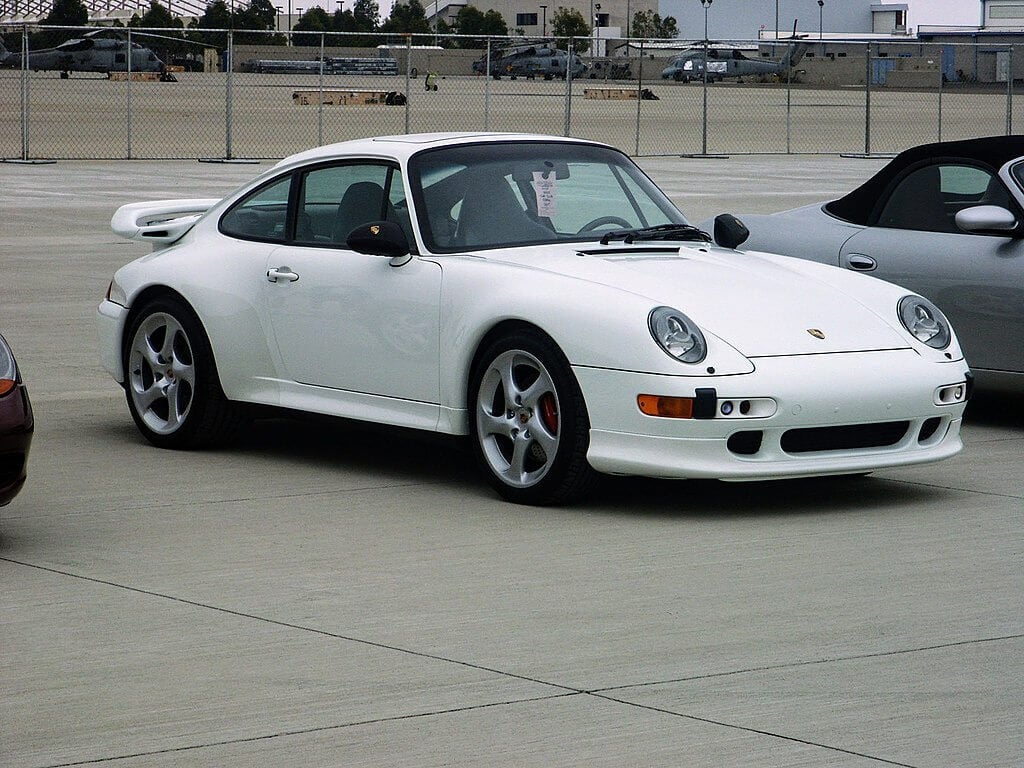
Frank and Myra Fan., CC BY 2.0, via Wikimedia Commons
The Porsche 911 (993) is the internal designation for the Porsche 911 model produced by Porsche from 1993 to 1998. This is the fourth generation of the Porsche 911. As a significant update from the previous 964 generation, it features a more refined design, improved performance, and enhanced handling.
The 993 was available in a range of models, including the Carrera, Carrera 4, Turbo, and Targa. These models have a range of flat-six engines which include the 3.6-liter air-cooled engine that produced up to 282 horsepower in the Carrera and up to 408 horsepower in the Turbo.
The 993 was also the first 911 to feature a six-speed manual transmission, as well as a redesigned suspension system and larger brakes. With the 993 there was improved handling and stopping power. Even today, most people who end up behind the wheel declare the 993 their favorite driving car. The 993 is widely regarded as one of the most beautiful and best-driving generations of the Porsche 911 and is highly sought after by Porsche enthusiasts.
2. BMW M3 (E36)
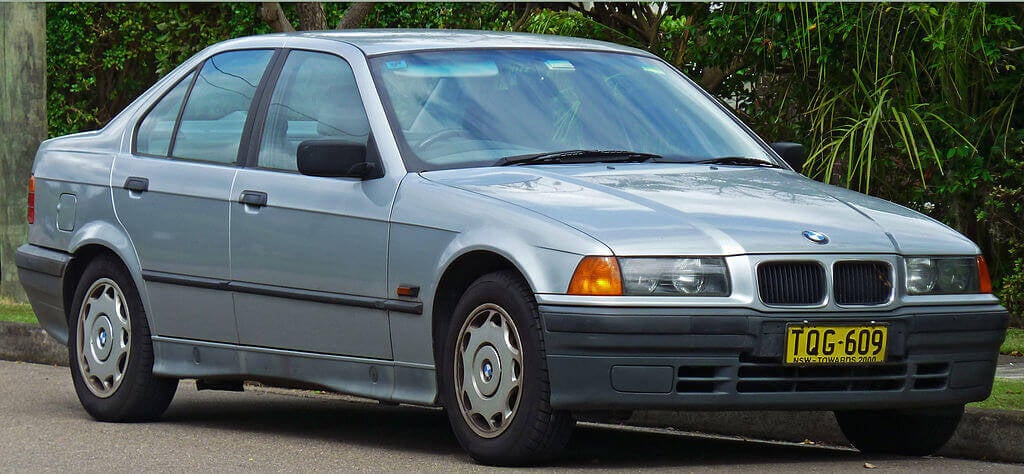
OSX, Public domain, via Wikimedia Commons
The BMW M3 (E36) is a high-performance version of the BMW 3 Series, produced by BMW from 1992 to 1999. It was the second generation of the BMW M3 and was a successor to the original E30 M3.
The E36 M3 was powered by a 3.0-liter inline-six engine that produced up to 240 horsepower. Styling wise, it was available in both coupe and convertible body styles. It also featured several performance upgrades over the standard 3 Series, including a sport-tuned suspension, larger brakes, and a limited-slip differential.
In 1995, BMW introduced the M3 Lightweight, which was a stripped-down version of the M3 designed for track use. It featured a reduced weight, stiffer suspension, and a more powerful engine that produced up to 240 horsepower.
The E36 M3 was widely praised for its performance and handling, and it was a popular choice among driving enthusiasts. It was succeeded by the E46 M3 in 2000. Today, the E36 M3 is considered a classic BMW and can be found on many weekend tracks to this day.
3. Mercedes-Benz 500E
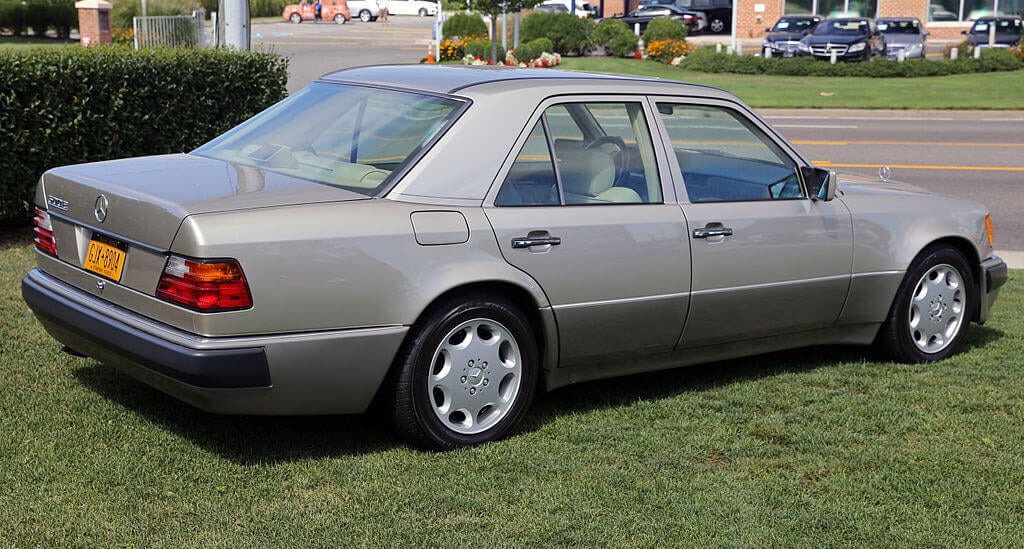
Mr.choppers, CC BY-SA 3.0, via Wikimedia Commons
The Mercedes-Benz 500E is a high-performance luxury sedan produced by Mercedes-Benz from 1991 to 1994. It was a collaboration between Mercedes-Benz and Porsche, with the latter company assisting in the car’s design and production.
The 500E was based on the Mercedes-Benz W124 chassis, which was the platform for the mid-size E-Class sedan. The 500E was powered by a 5.0-liter V8 engine that produced 322 horsepower and 354 lb-ft of torque, which was mated to a four-speed automatic transmission. The car also featured a sport-tuned suspension, larger brakes, and a limited-slip differential.
The 500E was known for its exceptional performance and handling, with a top speed of 160 mph and a 0-60 mph acceleration time of just over 6 seconds. The luxurious interior featured high-quality materials and advanced features for its time, such as a CD changer and heated seats.
The 500E was a limited-production model, with only around 10,000 units produced. It was replaced by the E500 in 1994, which was essentially the same car but with a few minor updates. Because of its very limited numbers, many MB lovers consider this as one of their top 10 European cars from the 90s.
4. Audi RS2 Avant
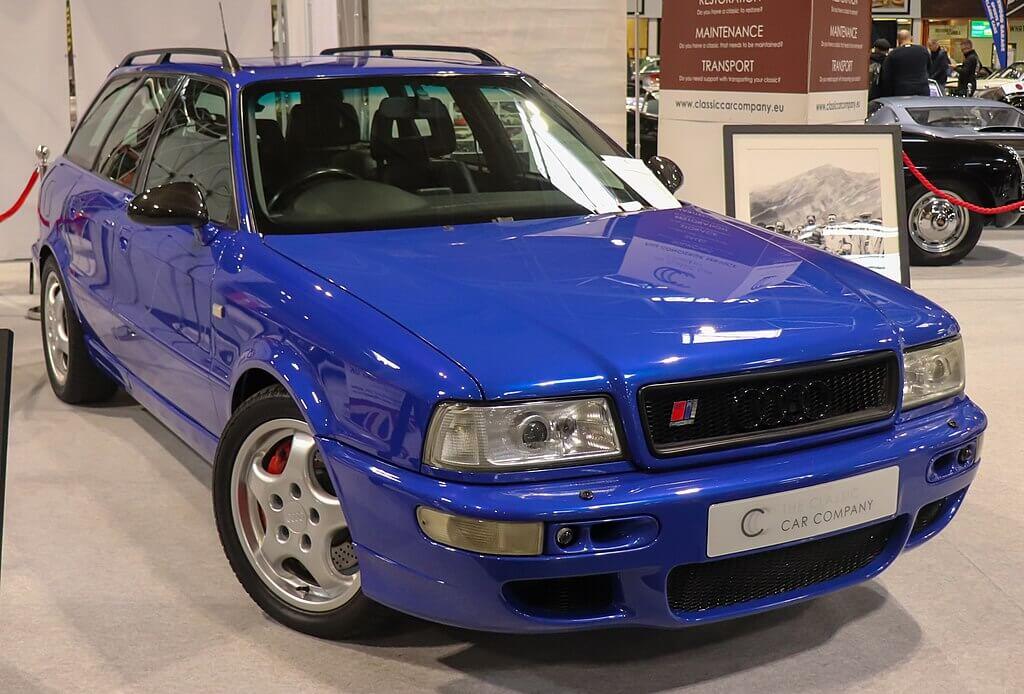
Vauxford, CC BY-SA 4.0, via Wikimedia Commons
The Audi RS2 Avant is a high-performance station wagon produced by Audi in collaboration with Porsche from 1994 to 1995. It was based on the Audi 80 Avant and was the first model to wear Audi’s “RS” badge, This stands for “RennSport” or “racing sport” in English.
The RS2 Avant was powered by a 2.2-liter inline-five engine that was modified by Porsche and produced up to 311 horsepower and 302 lb-ft of torque. It was also equipped with a six-speed manual transmission and a Quattro all-wheel-drive system. The car accelerates from 0 to 60 mph in just over 5 seconds with a top speed of 163 mph.
The RS2 Avant was also fitted with a sport-tuned suspension, larger brakes, and unique styling cues, such as wider fender flares and a more aggressive front bumper. The interior featured high-quality materials and sport seats.
The RS2 Avant was praised for its exceptional performance and handling, and is regarded as the first high-performance wagon. It was produced in limited numbers. With only around 2,900 units produced, it has since become a rare and highly sought-after model among Audi and Porsche enthusiasts.
5. Jaguar XJ220
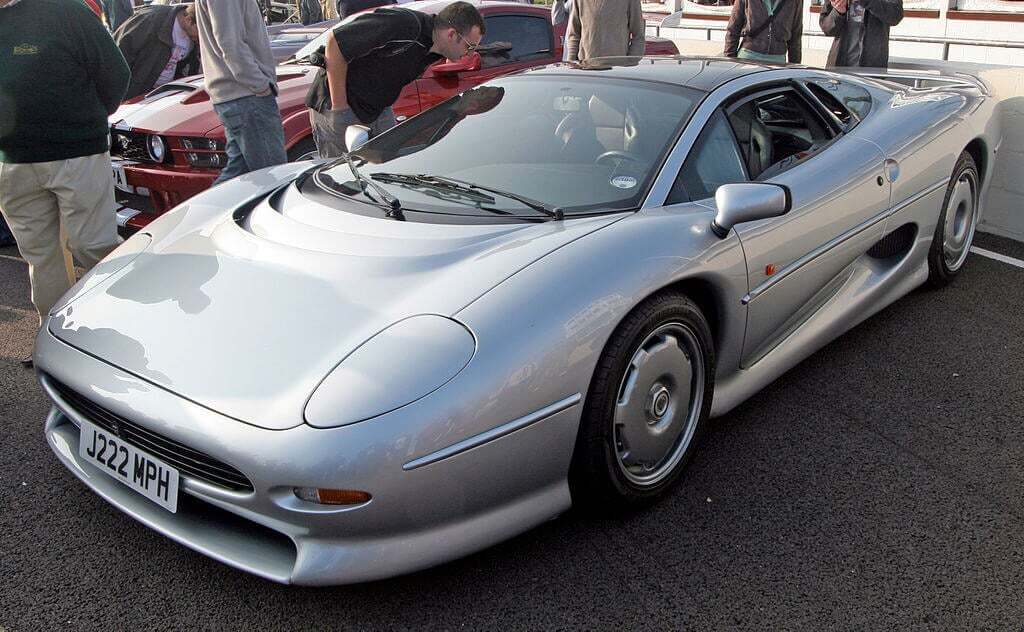
Brian Snelson, CC BY 2.0, via Wikimedia Commons
The Jaguar XJ220 is a supercar produced by British automaker Jaguar from 1992 to 1994. The car was originally developed as a concept by Jaguar and Tom Walkinshaw Racing, and it was produced in limited numbers for public sale.
The XJ220 was powered by a 3.5-liter twin-turbocharged V6 engine. This engine preduces up to 542 horsepower and 475 lb-ft of torque. Mated to a five-speed manual transmission it could propel the car from 0 to 60 mph in just over 3 seconds, with a top speed of 217 mph.
The XJ220 featured a lightweight aluminum body and a mid-engine layout, and it was fitted with a sport-tuned suspension, large disc brakes, and an advanced four-wheel drive system. The car also has unique styling, with a sleek, aerodynamic design and distinctive rear wing.
Despite its impressive performance and advanced technology, the XJ220 had a relatively short production run, with only around 280 units produced. The car was also criticized for its high price tag and difficult handling. This made it a challenging car to drive for many enthusiasts. However, the XJ220 has since become a highly sought-after collectible and is considered a classic European supercar of the 1990s.
6. Ferrari F355
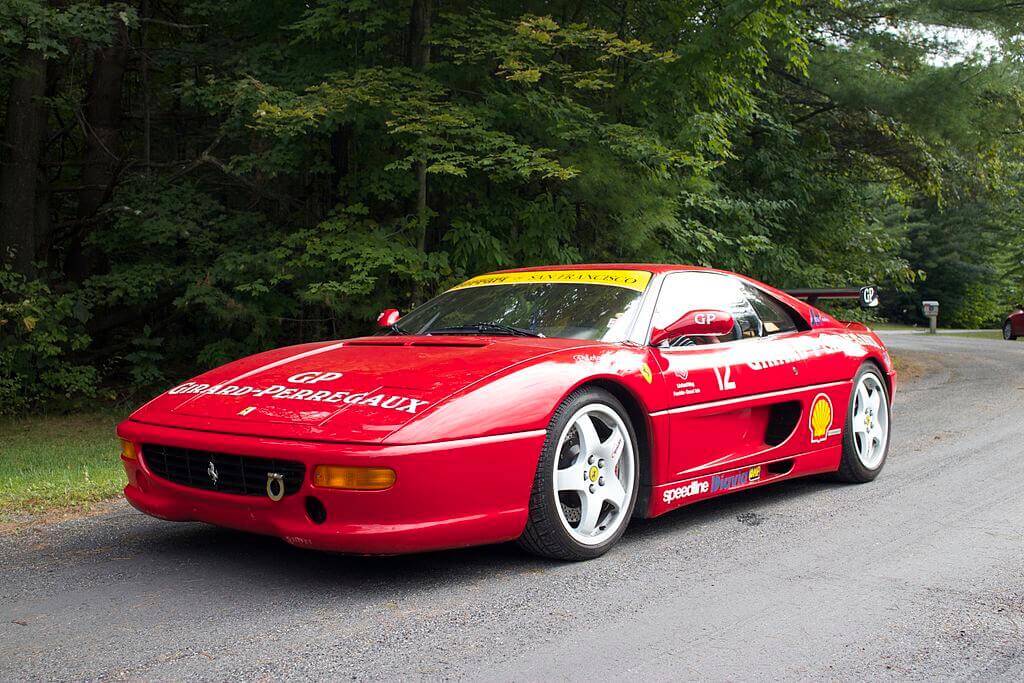
Timhood, CC BY-SA 4.0, via Wikimedia Commons
The Ferrari F355 is a mid-engine sports car produced by Ferrari from 1994 to 1999. It was introduced as a replacement for the Ferrari 348 and was available in both coupe and convertible body styles.
The F355 was powered by a 3.5-liter V8 engine that produced up to 375 horsepower and 268 lb-ft of torque. This engine was mated to a six-speed manual or an optional F1-style automated manual transmission. The car also featured a sport-tuned suspension, larger brakes, and an advanced electronic stability control system.
The F355 has exceptional performance and handling. With a top speed of 183 mph and a 0-60 mph acceleration time of just over 4 seconds, it was one of the fastest cars available. It was also praised for its sleek and aerodynamic design, which was penned by Pininfarina and incorporated modern styling elements, such as pop-up headlights and a wide rear track.
The F355 was also available in special editions, such as the F355 Challenge and the F355 Spider. The F355 Challenge was a race-prepared version of the car that was designed for competition use, while the F355 Spider was a convertible variant that featured a retractable soft top.
Today, the F355 is considered a classic Ferrari and is highly sought after by collectors and enthusiasts. It takes the crown as one of the most beautiful and best-driving Ferraris of the 1990s.
7. Volkswagen Golf GTI (Mk3)
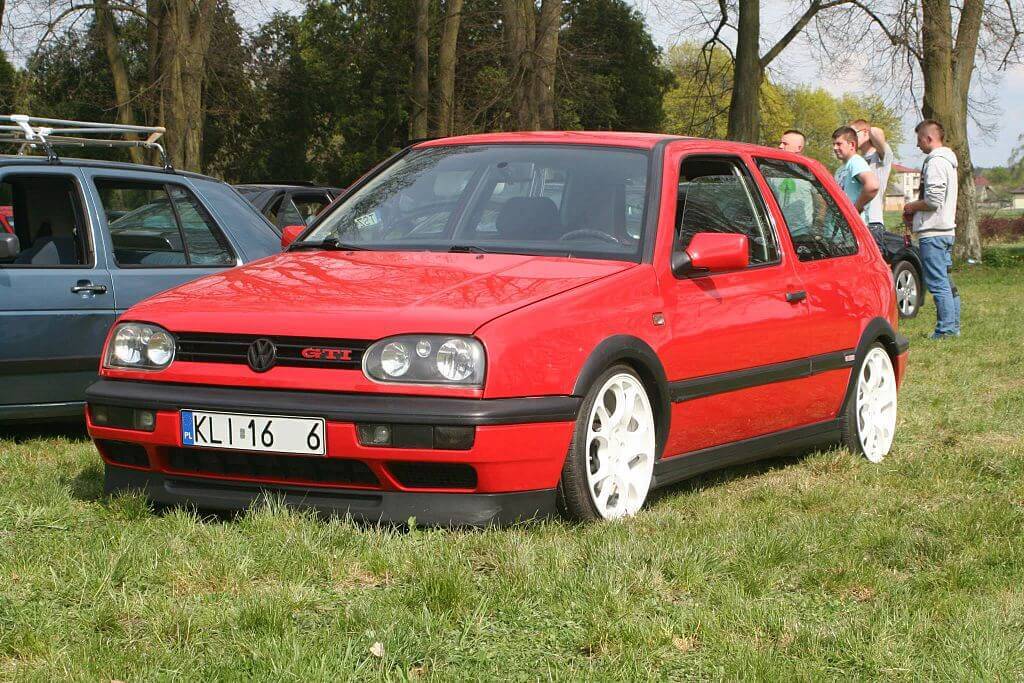
Ras RDK, CC BY-SA 4.0, via Wikimedia Commons
The Volkswagen Golf GTI (Mk3) is a performance-oriented version of the third-generation Volkswagen Golf hatchback, produced from 1991 to 1998. It was the successor to the popular Mk2 GTI and regarded as a significant improvement in terms of performance, handling, and refinement.
The Mk3 GTI was available with a variety of engine options. These range from a 1.8-liter four-cylinder to a 2.8-liter VR6 engine. The most popular engine was the 2.0-liter inline-four, which produced up to 150 horsepower and 133 lb-ft of torque. The car was available with a five-speed manual or a four-speed automatic transmission.
The Mk3 GTI featured a sport-tuned suspension, larger brakes, and unique styling elements, such as a red grille stripe and distinctive GTI badging. The car also has a high-quality interior. Some features include comfortable sport seats and a few standard amenities, such as air conditioning, power windows and locks, and a premium audio system.
The Mk3 GTI was widely praised for its responsive handling and overall driving experience, with many reviewers citing it as one of the best hot hatches of the 1990s. It was also noted for its reliability and ease of maintenance. This makes it a popular choice among enthusiasts who wanted a practical and fun-to-drive daily driver.
Today, the Mk3 GTI is considered a classic Volkswagen and is highly sought after by enthusiasts and collectors. Its reputation for performance, reliability, and practicality has helped it to become one of the most iconic hot hatches of all time.
8. Renault Clio Williams
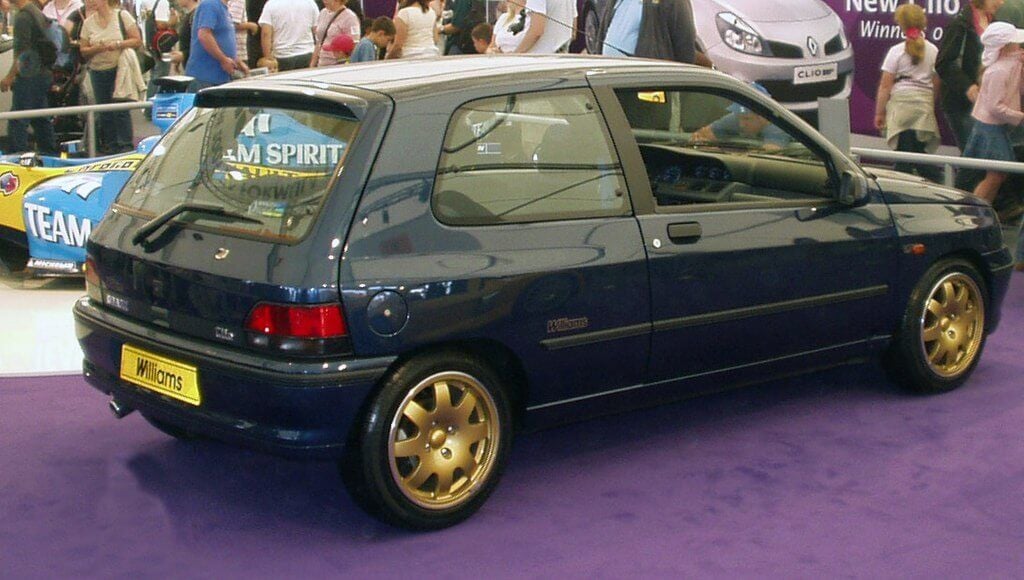
AlexJ, CC0, via Wikimedia Commons
The Renault Clio Williams is a hot hatch produced by French automaker Renault in the mid-1990s. The car’s name derives from Williams Formula One team, with which Renault had a close working relationship at the time.
The Clio Williams based itself on the second-generation Clio hatchback and only had limited numbers between 1993 and 1996. The car was powered by a 2.0-liter inline-four engine that produced up to 150 horsepower and 129 lb-ft of torque, which was mated to a five-speed manual transmission. The car featured a sport-tuned suspension, larger brakes, and unique styling elements, such as a distinctive blue paint scheme and gold alloy wheels.
The Clio Williams was highly regarded for its exceptional handling and overall driving experience. It was so good, many reviewers cite it as one of the best hot hatches of its era. The Clio is reliable and easy to maintain, making it a popular choice among enthusiasts who wanted a practical and fun-to-drive daily driver.
The Clio Williams was also notable for its success in motorsport. Through its career, the car won several rally and touring car championships during the 1990s. The car’s reputation for performance, handling, and motorsport success has helped it to become a highly sought-after collectible today, with many enthusiasts considering it one of the most iconic hot hatches of all time.
9. Peugeot 205 GTI
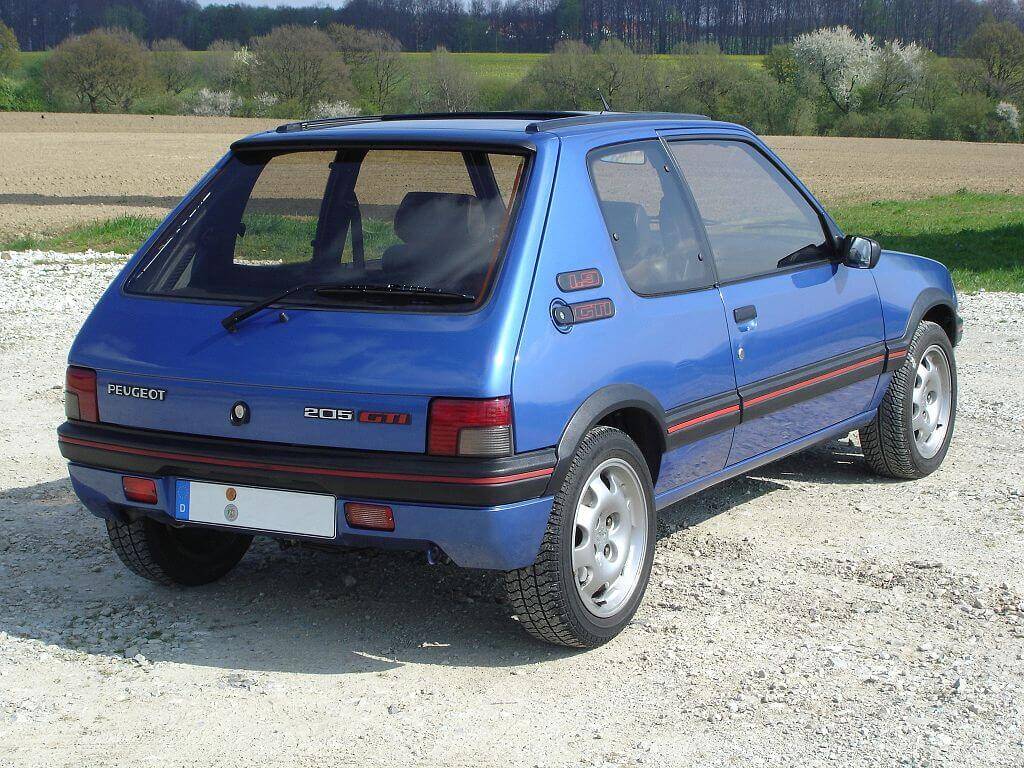
Christoph (CrazyD), CC BY-SA 3.0, via Wikimedia Commons
The Peugeot 205 GTI is a hot hatchback produced by the French automaker Peugeot from 1984 to 1994. The car was a high-performance variant of the popular Peugeot 205 hatchback. It quickly gained a reputation for its fun-to-drive nature and agile handling in the hatchback form factor.
The 205 GTI used a range of engines over the course of its production. These include a 1.6-liter and 1.9-liter four-cylinder engines. The top-spec 1.9-liter engine produces up to 130 horsepower and 121 lb-ft of torque, with a five-speed manual transmission.
The car’s lightweight construction, agile suspension, and precise steering made it a joy to drive, and it quickly gained a reputation as one of the best hot hatches of its era. The 205 GTI also featured a sporty exterior design, with a lowered ride height, wider fenders, and distinctive black and red accents.
The 205 GTI was also successful in motorsports, with the car winning several rally championships throughout the 1980s and 1990s. Today, the Peugeot 205 GTI is considered a classic and is highly sought after by driving enthusiasts and collectors for its performance, handling, and distinctive style.
10. Lamborghini Diablo
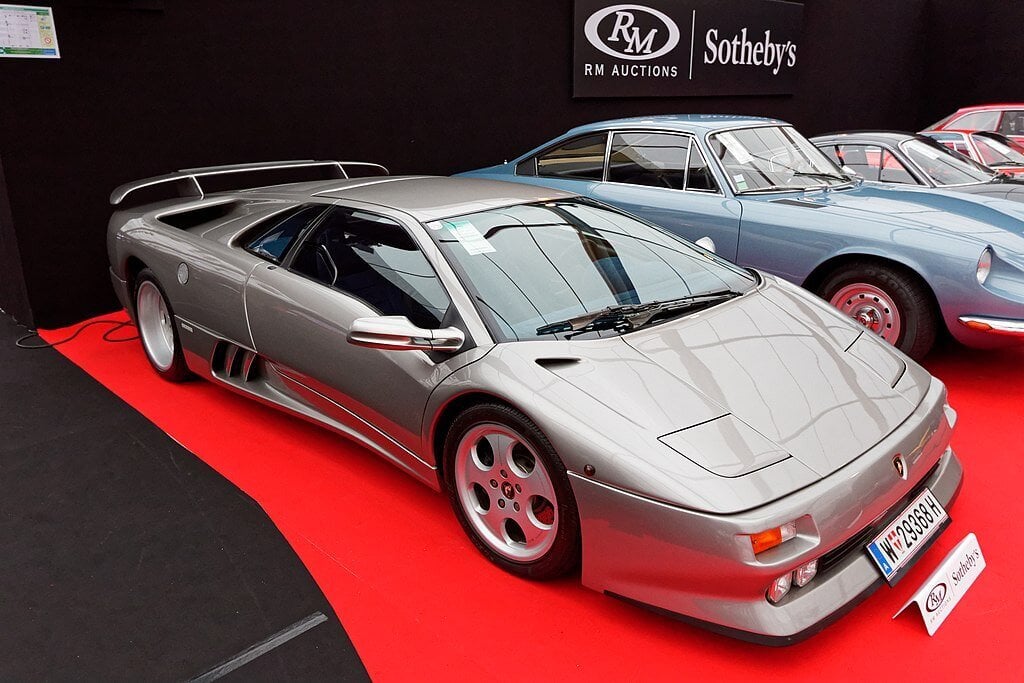
Thesupermat, CC BY-SA 4.0, via Wikimedia Commons
The Lamborghini Diablo is a high-performance sports car produced by the Italian automaker Lamborghini from 1990 to 2001. The car was named after a ferocious bull that fought in a bullfight in the 19th century. This motif made it a flagship model that represents the best of Lamborghini’s engineering and design capabilities.
The Diablo was the flagship model for Lamborghini throughout the 1990s. It was introduced in 1990 as a replacement for the iconic Countach. The Diablo had several variants, including the VT, SE, and SV, and remains one of the most iconic Lamborghinis of all time.
The Diablo featured a mid-engine layout, with a powerful V12 engine mounted behind the driver that produced up to 529 horsepower in its initial iteration. The car’s aggressive exterior styling, with its sharply angled lines and dramatic air intakes, helped to establish the Diablo as one of the most recognizable and iconic Lamborghinis of all time.
Over the course of its production, the Diablo underwent several updates and revisions. The Diablo VT, introduced in 1993, added all-wheel drive and a few other performance enhancements. The Diablo SV, introduced in 1995, featured even more aggressive styling and a stripped-down interior focused on reducing weight. And the Diablo GT, introduced in 1999, featured a more powerful engine, carbon fiber bodywork, and other high-performance upgrades.
Today, the Lamborghini Diablo is considered a classic among exotic car enthusiasts, and it remains one of the most recognizable and iconic Lamborghinis ever produced.
Top 10 European Cars from the 90s Conclusion
These are just a few examples of some of the best European cars from the 90s. While cars today go much faster than cars in the 90s, it is still special driving any of these classics. Many of these great vehicles are still in Europe and some were only ever available there. To get these rare vehicles in America you’ll need an international shipping company to handle your shipment.
Schumacher Cargo Logistics has been shipping since 1977 and check out our article on how to import a car from Europe or fill out our quote form at the top of the page to start your shipment today.

